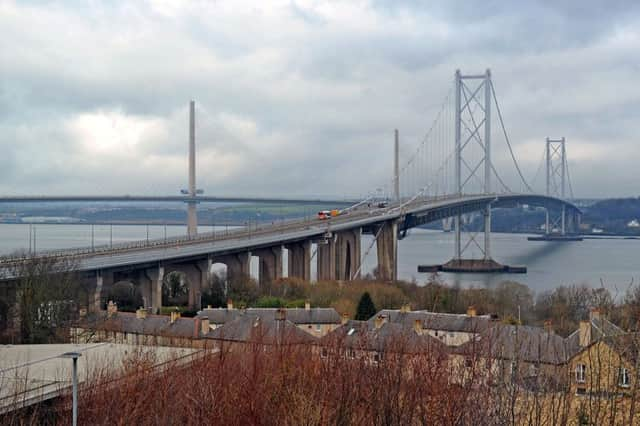Forth Road Bridge must be for cars in emergencies only - Alastair Dalton


Much of Scotland depends on bridges to get about, but those over the Forth have attracted disproportionate anguish, pitfalls and debate.
While there has on occasion been a focus on other major crossings like the Erskine, Kessock, Skye and Tay bridges, those over the Forth at Queensferry have had an uncanny ability to have never been far from the headlines.
Advertisement
Hide AdAdvertisement
Hide AdThe Forth Road Bridge - and now the Queensferry Crossing too - have become the roads equivalent of “the story that keeps on giving”, as I have described ScotRail.
Perhaps it’s because of their status as the country’s busiest bridges, as, arguably, they are no more exposed to the elements than any of the others, even if officials might argue their location can leave them prone to especially challenging, if not unique, weather conditions.
That, we’re told, is what happened with the snow build-up on the Queensferry Crossing’s cables, which The Scotsman revealed in March last year after three vehicles had their windscreens smashed. It would square with Scotland’s notoriously unpredictable and rapidly changeable winter weather, which has attracted the interest of experts from countries with more extreme but more certain cold spells.
However, perhaps more significant than any alleged technical shortcomings of the two-and-a-half-year-old bridge is the further attention it is likely to give to its traffic capacity and that of its semi-retired countrpart.
Ministers have in the past played down the idea the Forth Road Bridge could be used for vehicles other than buses and taxis now that the opening of the Queensferry Crossing has given it a new role as a “public transport corridor”.
It is pretty easy to switch vehicles between the two, as happened in 2017 when the new bridge was closed for bridge walks and the Royal opening. The approach roads to both bridges meet at both the Edinburgh and Fife ends, where barriers can be moved across as required.
However, it’s a case of one or the other, and you’d have to built a new interchange at each end of the bridges to enable cars, vans and lorries to run on both at the same time.
The Scottish Government is now looking at the feasibility of temporarily switching all traffic should the Queensferry Crossing have to be closed again. It couldn’t be done this week because of long-planned major work on the Forth Road Bridge, such as the replacement of carriageway expansion joints which was held over until its successor was opened.
Advertisement
Hide AdAdvertisement
Hide AdOf course, it’s possible that may never be required, but every time it is, questions will be asked again about why we have one bridge which is almost full at peak times and one which is virtually empty.
That is in no way to argue for any relaxation of what traffic can use the Forth Road Bridge/ Instead, there is a need to further accelerate measures to attract more commuters from cars to buses.
There has already been growth, as principal operator Stagecoach has announced. But worryingly, if predictably, more than one million extra journeys a year have been made over the Queensferry Crossing when ministers pledged such growth would be by public transport.
Expansion of the bus service - and autonomous vehicles from the end of the year might assist - would help ensure they would continue to be given a clear run across the Forth.
Increasing numbers of bus passengers facing slower journeys if they had to share lanes with cars would be unacceptable.